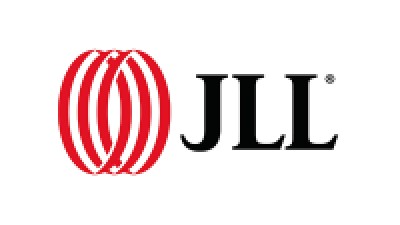‘Active And More Bullish’: CRE Is Regaining Its Luster Among Lenders And Investors

Kelly Layne, senior managing director of capital markets for JLL, was recently on the phone with a colleague at one of the largest global insurance providers, and they were feeling pretty good.
“They are very active and more bullish in CRE,” Layne said.
The call was representative of many conversations he has had recently.
“On the equity side, if you talk to many of the major institutions, you know that they are, sentiment-wise, more bullish now than 12 months ago,” he said.
Layne and Lauro Ferroni, JLL’s head of capital markets research for the Americas, spoke with Bisnow about what is driving the nascent optimism among investors and lenders in an industry that has navigated challenges and notable value resets in recent years. While obstacles to growth remain, such as continued higher interest rates, consensus is building that the worst of the storm is over.
“I think we are moving into a new normal, and it's because the decline we saw in transaction volumes has by and large leveled off,” Ferroni said. “Secondly, pricing as a whole has stabilized and in some cases has actually improved. Those were two things that needed to happen for the market to accept that we've reached a new normal upon which we can now build and grow again going forward.”
Layne said the improving sentiment applies to CRE asset classes across the board, although volatility has not disappeared completely and certain sectors continue to perform better than others.
In a recent and generally upbeat Global Real Estate Outlook, JLL said it anticipated more “opportunities for investors and occupiers to execute on their strategies” in the year ahead. The report’s observations mirrored Layne and Ferroni’s own experiences in key asset classes, and they filled Bisnow in on what they are seeing.
Retail
JLL reported that this sector is “poised for continued recovery,” with many retailers feeling that they have moved past the worst of pandemic- and e-commerce-related disruptions. Stronger brands are planning to expand in the coming years, it noted.
Ferroni said the sector is performing better than some expected and is back on the radar of many investors and lenders.
“Retail struggled a good bit during Covid and then staged an impressive recovery that caught some people by surprise,” he said. “That’s another sector that insurance company lenders in particular have been leaning into in recent quarters.”
Office
This battered asset class is seeing further gradual improvement in return-to-office levels as employers and landlords adjust to hybrid work practices, JLL reported. It predicted office leasing demand will continue to mark additional growth through the rest of the year.
Layne said he sees evidence of this budding recovery up close.
“In our Houston office, we've closed a couple of large office transactions on the financing side with CMBS lenders,” he said. “The mantra that there are no bids from lenders for office is just factually wrong. There absolutely is a bid — it's just got to be at the right credit levels.”
Residential
JLL called this sector a continuing “bright spot” among asset classes. For multifamily, JLL predicted absorption will continue to exceed expectations as the job market remains strong. This will hold rents and occupancy flat over the near to medium term until supply begins to taper off in late 2025, it said. In several markets with lesser supply pressure, rents will continue to climb 2% to 4% year-over-year.
One recent example of the institutional appeal of the residential sector: KKR’s $2.1B purchase of Quarterra’s portfolio of 18 multifamily Class-A assets in June, encompassing more than 5,200 units in a deal that JLL is advising on.
“The CRE market might not be perfect at the moment, but people are recognizing that fundamentals are holding up,” Ferroni said. “We are still adding jobs in the U.S. economy, and that is leading to demand for multifamily housing units.”
Institutional investors have taken notice of these trends in CRE asset classes, contributing to the improving sentiment, Layne said.
“We've seen life insurance companies, especially, lean into real estate mortgages again, and that's really been helpful,” he said. “The CMBS market right now is as healthy as it's been in a long time.”
Another hopeful trend can be seen in cap rate compression, which has accelerated as CRE players gained confidence in future investment performance. Ferroni noted there has been a 50-basis-point cap rate compression in the industrial asset class since last year, and multifamily has seen some compression as well in recent months.
“What we're seeing across the market is more actual stakes in the ground with more needle-moving transactions that are validating these improved cap rates,” he said.
Ferroni and Layne said they expect other deals to be announced in the coming year as CRE investors and lenders regain their sea legs.
“In our conversations about where they desire to place capital, the only places they wanted to put money to work at this time last year were in industrial and multifamily,” Layne said. “I think that has pivoted and now they’re looking at alternatives, including even office, so long as they are newer-vintage and well-leased assets. The fairway is widening to where lenders are willing and ready to deploy capital, which is exciting and shows that there's a lot of demand for CRE.”
This article was produced in collaboration between JLL and Studio B. Bisnow news staff was not involved in the production of this content.
Studio B is Bisnow’s in-house content and design studio. To learn more about how Studio B can help your team, reach out to studio@bisnow.com.

